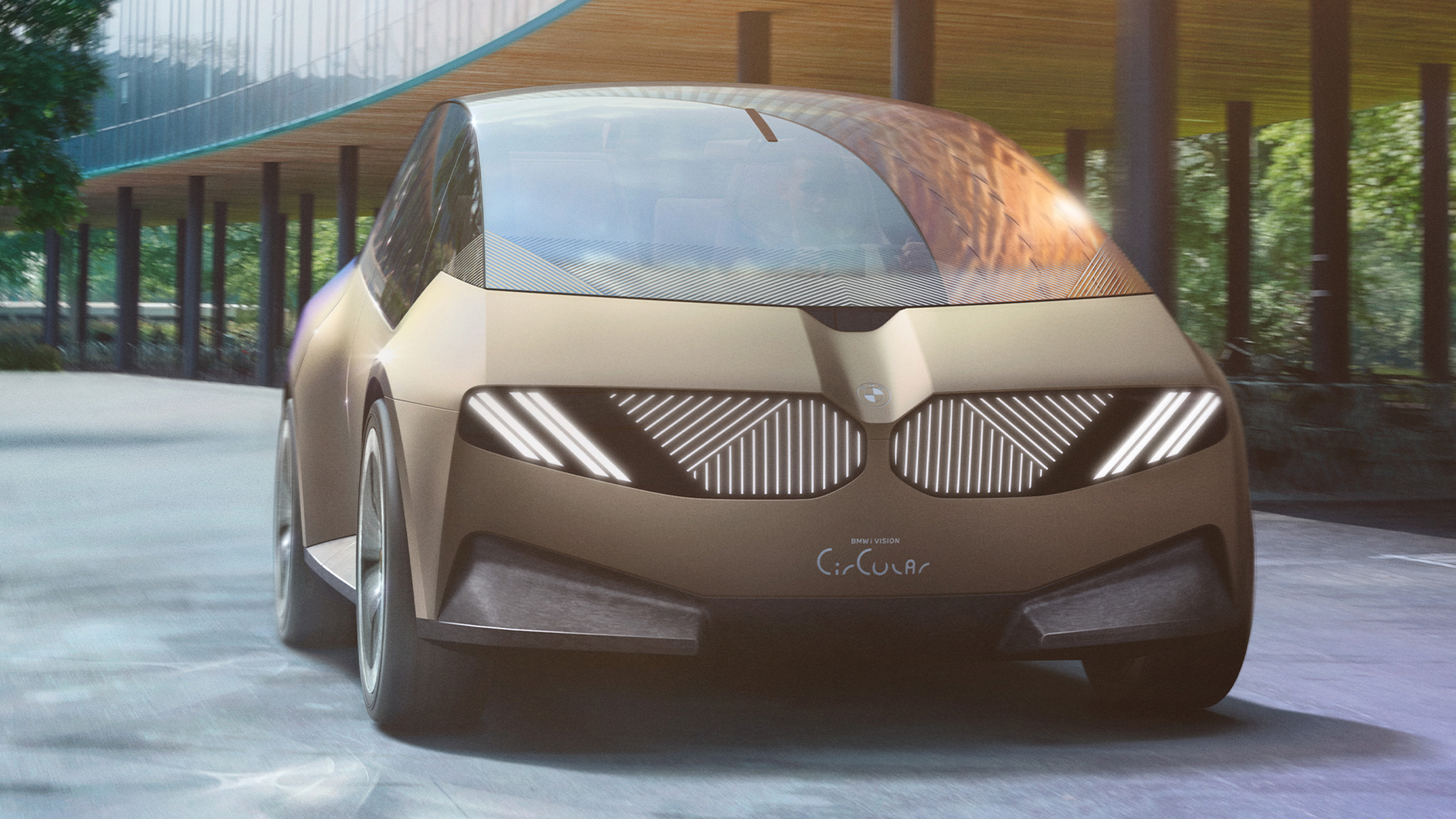

Usually, grand concept cars that illustrate the electric future are nothing more than vaporware to people in the real world. The Audi Grandsphere is, like, fine—not the best, not the worst. It’s essentially a vision of a world where people will continue to use private jets and it’s got some sustainable stitching.
The i Vision Circular, though, is really, genuinely likable. It’s one of those big statement concepts about what BMW is doing as a brand, which is—like every car company—trying to reinvent itself as carbon-neutral, environmentally friendly, and a leader in circular economy. BMW is promising that it’ll sell 10 million BEVs by 2030 and every second car off its assembly lines will be electric at the end of the decade.

Compared to, say, a Cybertruck, the i Vision Circular is tiny. It’s a little car, modest and minimal not in the sense that it’s had all its detailing removed but in the way it’s a much quieter statement than something the size of a fricking bus. A person standing next to it can easily see over the roof and you could probably fit two in most parking spaces.
That’s a statement in itself. In a world of yet more crossover SUVs and two-ton EVs that need specialist truck tires to roll, it is an honest delight to see a little car. That’s not just my European preference showing through, it’s that the i Vision Circular stands out by being genuinely different from most of the cars being shown here at IAA.



It’s little, it’s pretty—dainty almost. The blushy velvet interior looks like a Twitch streamer’s setup but not in the lurid LED way cockpits seem to be heading in. The nude, anodized aluminum of the exterior bodywork feels touchable, the dull glow inviting. The combination grille and headlights look like something out Blade Runner concept art but in a good way.
Inside the car, the strange, shimmering purple touch-control dash is so beautiful it’s hard to resist putting your hand on it. Like going to a natural history museum as a kid and wanting to touch all the rocks in the gift shop, it’s irresistibly alluring. The steering wheel, too, feels like you want to touch it—and it’s not a self-driving robo-prototype. It’s intended to be driven and for you to enjoy that.
Honestly, I don’t give a damn what the range or battery size or power output or regen capabilities on it are because it’s a prototype. I’m never gonna get to even sit in one let alone drive it but this is the first concept in a long time that I’m actually anguished about that fact over. I want this car; the idea of sitting in its gently formed interior makes me ache with need in a way I actually didn’t know I could over anything that wasn’t some sort of 1980s heap of crap I’ve developed nostalgic insanity over.
The detail of it is lovely, too. Made with recycled parts everywhere possible, the i Vision Circular is intended to be disassembled. That might sound irrelevant or even like a bad thing but for sustainability purposes, we need vehicles to be easily repairable. Every part is fixed with, where possible, a single fastener to be able to replace just the smallest section whenever it’s required, minimizing the need for new parts.


Design-wise, I called it a Cybertwingo when it was unveiled and well, maybe that’s why I like it so much. But the thing that actually sells it to me is it’s not bullshit—it’s a statement that’s well thought through and which commits lots of ideas in a way that delivers an actual vehicle that I actually want to drive.
It’s fun to look at, not a dystopian vision of a grim future where we hide in mobile greenhouse lounges sealed from the elements. It’s a car that someone drives places, built for a practical future of production.
Got a story tip? Mail me on hazel@thedrive.com